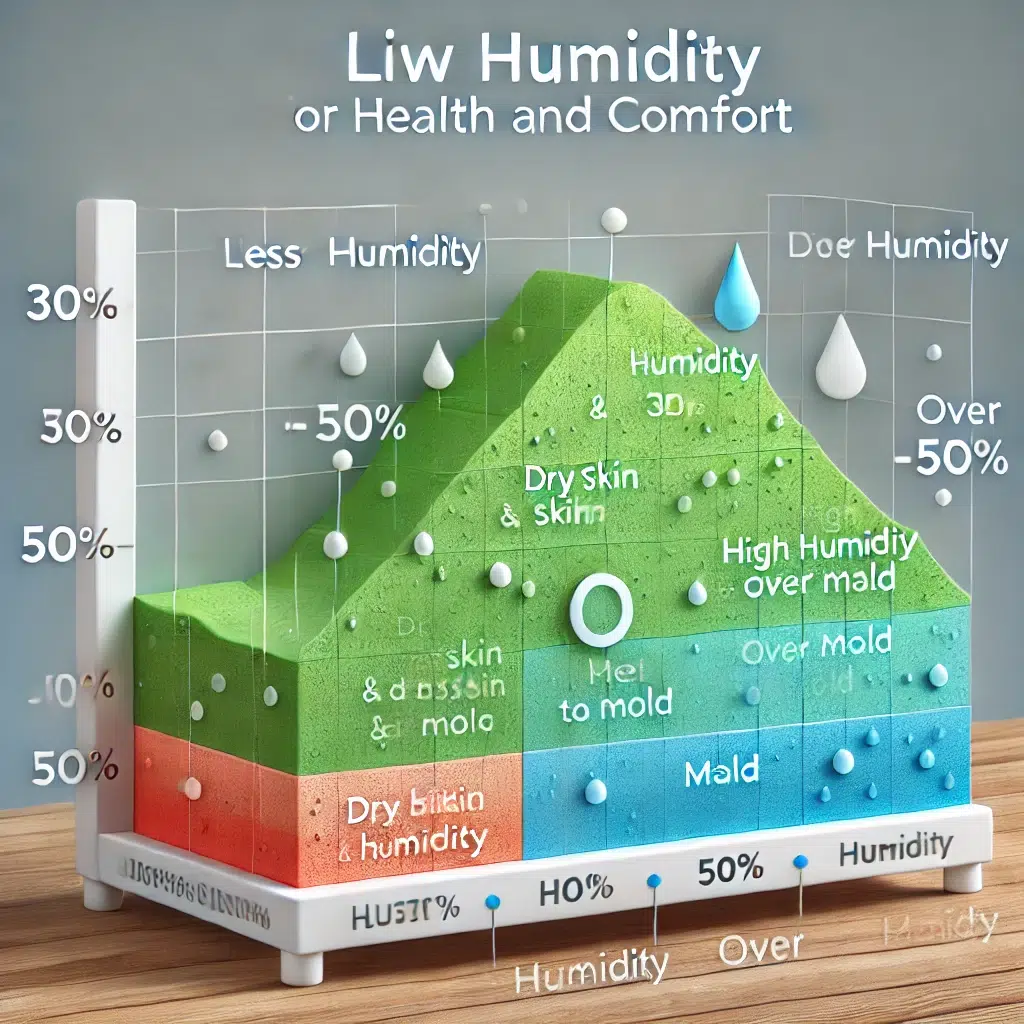Maintaining the correct humidity levels in your home is key to ensuring comfort, health, and the longevity of your property. This guide explains how to measure humidity, what the ideal levels should be, and how to regulate them effectively.
Why Humidity Levels Matter in Your Home
Humidity refers to the amount of moisture present in the air. Both high and low humidity can cause a variety of issues, including:
- Health problems like dry skin, respiratory issues, or worsening allergies.
- Damage to your home such as mold growth, wood warping, or peeling paint.
- Energy inefficiency that can increase heating and cooling costs.
To prevent these problems, it’s important to maintain an indoor humidity level between 30% and 50%. This range promotes comfort, reduces the spread of allergens, and protects your home from moisture-related damage.

How to Measure Humidity in Your Home
The most accurate way to measure humidity is with a hygrometer. A hygrometer is a simple device that measures the moisture levels in the air, giving you a real-time reading of the humidity in your home.
- Digital hygrometers: These provide precise humidity readings and often include temperature data as well.
- Analog hygrometers: These are less common but can be a reliable, battery-free option for basic humidity measurement.
Pro Tip: Place the hygrometer in different areas of your home to monitor humidity variations between rooms, especially in spaces like the basement, bathroom, or kitchen where moisture levels can fluctuate.
Understanding Ideal Humidity Levels
The ideal indoor humidity levels can vary depending on the time of year and climate, but here’s a general guide:
- Winter: Aim for humidity between 30% and 40% to prevent dry air and static electricity buildup.
- Summer: Keep humidity between 40% and 50% to avoid excess moisture, which can lead to mold growth or make your home feel uncomfortable.
Effects of High and Low Humidity (Include Graphs Here)
A great way to visually represent humidity effects is through a graph. You can create a bar chart that shows the consequences of high and low humidity.
Graph 1: Impact of High vs. Low Humidity on Health and Comfort
- Low Humidity (<30%): Dry skin, irritated sinuses, static electricity, respiratory issues.
- High Humidity (>50%): Mold growth, dust mites, increased allergens, discomfort, musty odors.
Graph 2: Humidity Levels Throughout the Year
- Winter: Dry air can reduce humidity to below 30%, causing discomfort and increasing heating costs.
- Summer: High moisture levels can push humidity above 50%, making your home feel sticky and warm.
How to Adjust Your Home’s Humidity Levels
After measuring your humidity, you may need to adjust it depending on the readings. Here’s how you can manage both low and high humidity levels:
- For Low Humidity:
- Use a humidifier to add moisture to the air. Humidifiers are particularly useful in winter, when indoor heating can cause the air to become excessively dry.
- Consider houseplants that naturally increase humidity levels, such as ferns, palms, or peace lilies.
- For High Humidity:
- Install a dehumidifier to reduce moisture in overly humid rooms. These are often needed in basements, bathrooms, and kitchens.
- Increase ventilation by using exhaust fans in kitchens and bathrooms, or open windows when possible.

Additional Tips to Maintain Proper Humidity Levels
- Monitor your HVAC system: Ensure your heating and cooling systems are functioning properly. An inefficient HVAC system can lead to fluctuating humidity levels.
- Seal windows and doors: Properly insulating your home helps maintain consistent humidity levels by reducing drafts that bring in outside air.
- Use a programmable thermostat: Some thermostats can be equipped with humidity control features, allowing you to automate the regulation of moisture levels in your home.
How Beanz Heating & Cooling Can Help
At Beanz Heating & Cooling, we specialize in maintaining the perfect balance of comfort in your home. From humidity control solutions to HVAC maintenance, our team is ready to help you manage your home’s humidity and optimize indoor air quality.
Get a FREE Humidity Assessment Today!
Call Beanz Heating & Cooling at (312)593-6334 or visit our website to schedule a free humidity check. Our experts will guide you through maintaining the ideal humidity levels for a healthier, more comfortable home year-round.

